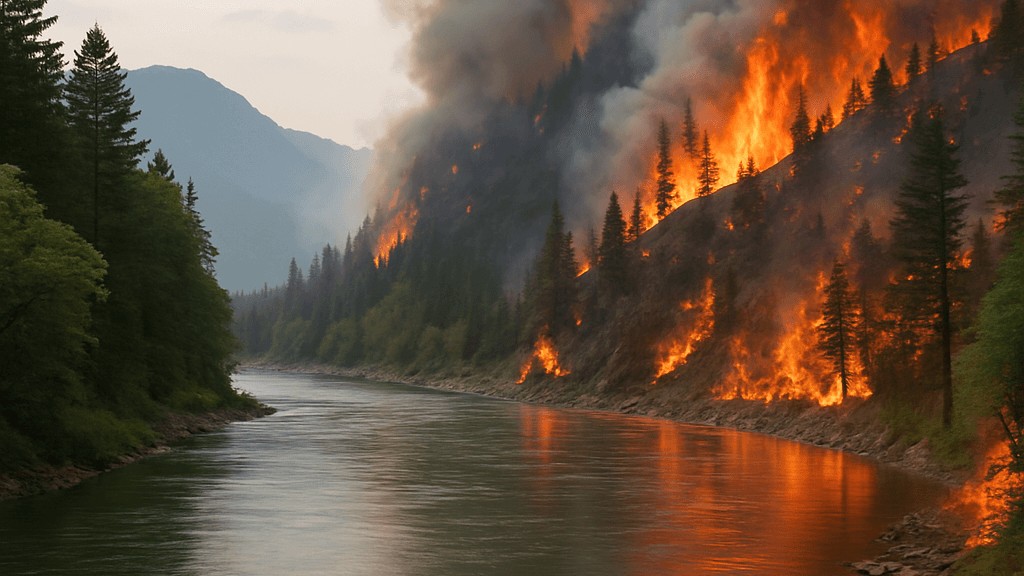The Fraser River, one of British Columbia’s most vital freshwater systems, is facing a new and intensifying threat: the growing influence of nearby wildfires. As British Columbia continues to experience hotter, drier summers, wildfires are becoming more frequent and severe. This environmental shift is beginning to take a measurable toll on the water quality in the Fraser River and its surrounding ecosystems.
Contamination and Ecosystem Risk
Recent scientific monitoring has identified a significant increase in metal concentrations and nutrients in the Fraser River during and after wildfire seasons. These include compounds such as arsenic, copper, lead, zinc, nitrogen, and phosphorus. While many of these elements occur naturally, wildfires can increase their presence to levels that may be harmful to aquatic life.
Vegetation loss from fires results in ash and soil runoff that is carried into waterways. Fires within 500 to 1,500 metres of the river can have an immediate effect on water quality, especially in the first three months after a burn. In contrast, fires farther away tend to have delayed but still measurable effects, sometimes appearing nearly a year later.
This contamination poses a serious risk to aquatic life. Elevated nutrients can lead to algal blooms, which deplete dissolved oxygen and can cause hypoxia. Fish, such as salmon, are highly sensitive to these conditions. Likewise, shellfish living on the riverbed may absorb heavy metals, which affects their survival and makes them unsafe for human consumption.
Climate Shifts and Water Flow Changes
These impacts are deeply connected to long-term climate trends. With warmer temperatures and reduced snowpack, the Fraser River is shifting from a snowmelt-fed system to one increasingly sustained by rainfall. This change not only affects seasonal flow levels but also how quickly and intensely contaminants from wildfire zones enter the river system.
Black carbon, a byproduct of forest fires, may also become more prominent in river systems. This substance can travel long distances, sink to ocean floors, and affect carbon sequestration. Its increasing presence may turn parts of the river from a carbon sink into a source of carbon dioxide emissions, further complicating climate mitigation efforts.
Public Health and Monitoring
Water quality in the Fraser River isn’t just an environmental issue—it also touches on public health and food safety. Contaminated shellfish and fish pose risks to communities that rely on local harvesting. With changing water chemistry, regular testing and public advisories will be essential to protect consumers.
Scientific models have estimated that wildfire activity accounts for as much as 16 percent of variation in the Fraser River’s water quality over the past 20 years. While more research is needed to determine long-term impacts, current data is clear that wildfire-driven contamination is no longer a rare or isolated occurrence.
Protecting the Fraser River’s Future
Addressing the root causes and downstream effects of wildfire contamination will require coordinated action. This includes continued monitoring, better forest management, and a shift in fire response strategies. Controlled burns and cultural fire stewardship are gaining attention as tools to prevent destructive wildfires by reducing excess fuel buildup.
As wildfires become a more regular feature of British Columbia’s climate, the Fraser River will remain vulnerable. Safeguarding this vital waterway requires a balanced approach that considers ecology, public health, and climate resilience. The science is clear: the time to act is now, before further degradation becomes irreversible.
